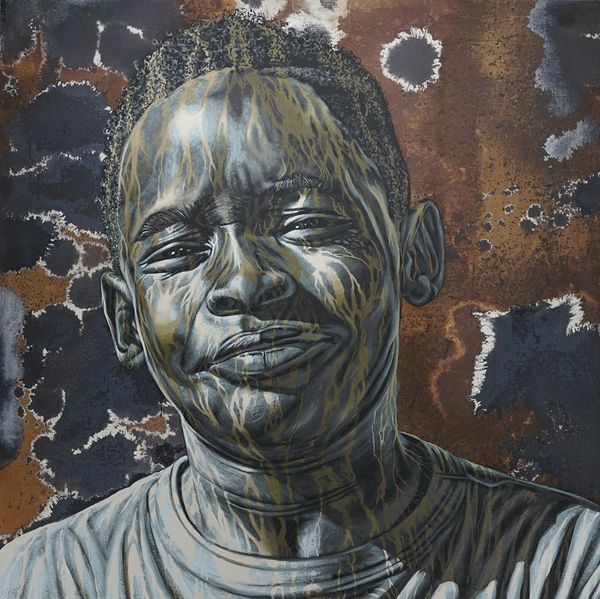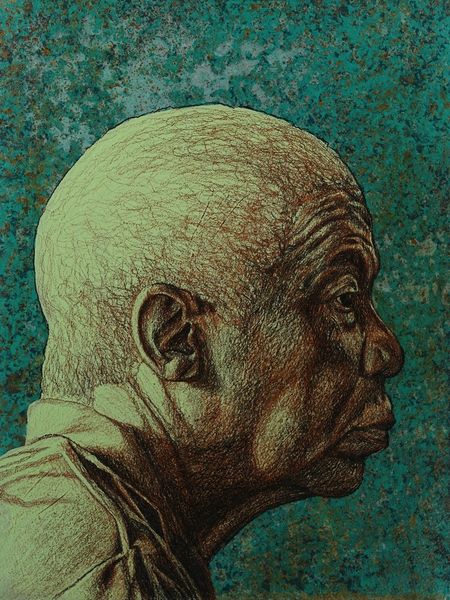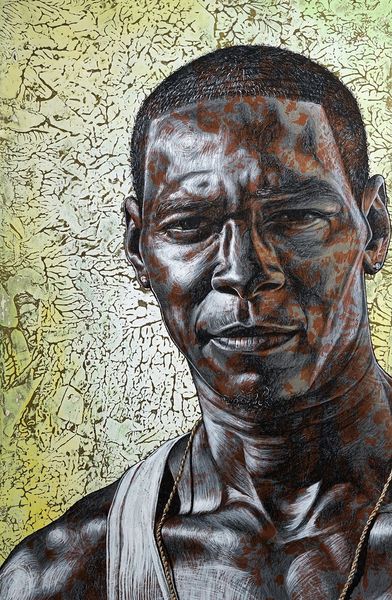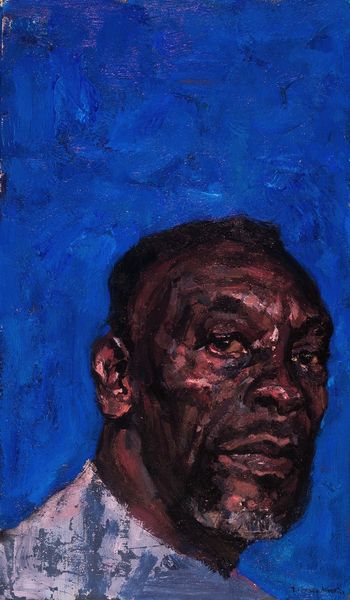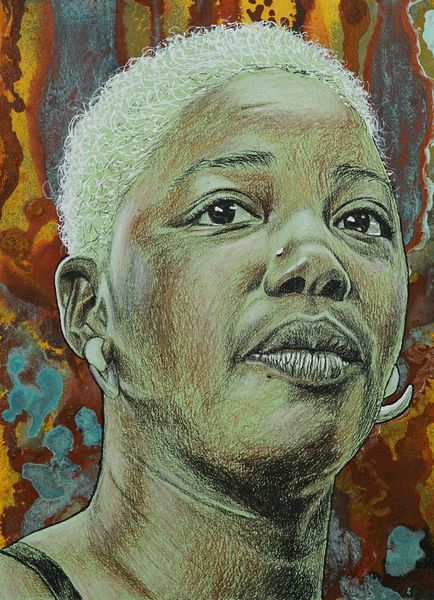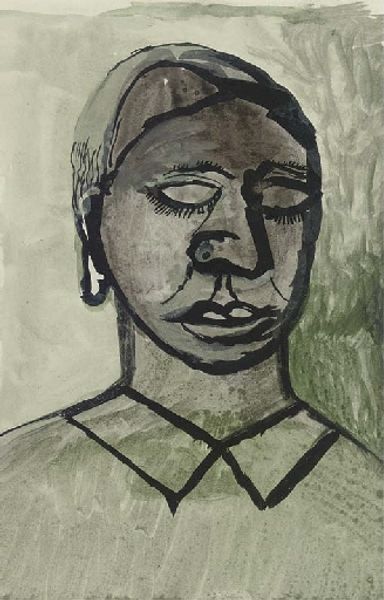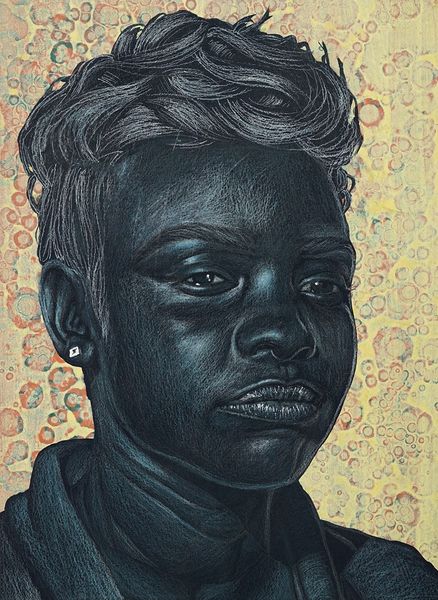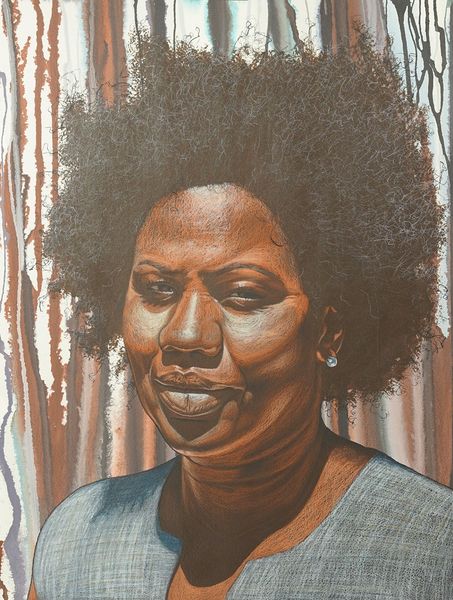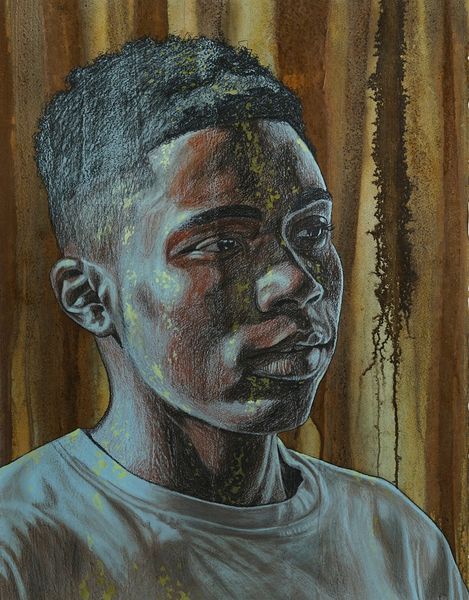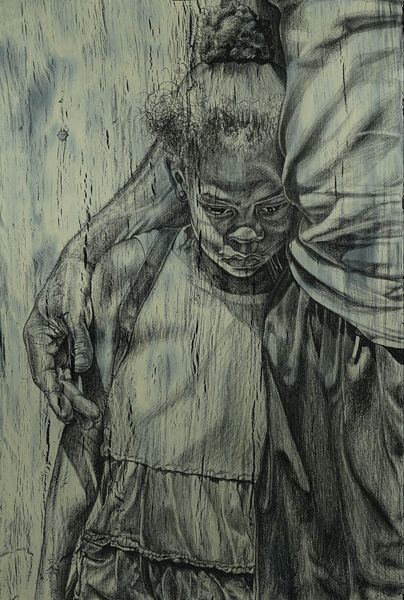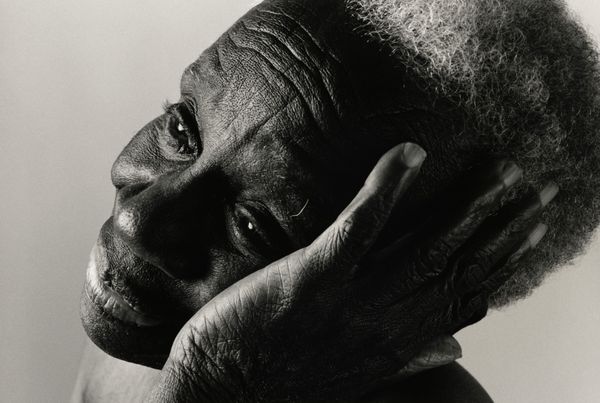
drawing, mixed-media, graphite
#
portrait
#
drawing
#
figurative
#
mixed-media
#
contemporary
#
figuration
#
graphite
#
portrait drawing
#
portrait art
#
realism
Copyright: Modern Artists: Artvee
Curator: The portrait, titled "Ms. Brenda," appears to be crafted from mixed media, perhaps graphite and other drawing materials. The artist is Alfred Conteh. What is your initial take on this artwork? Editor: The first thing that strikes me is the deep humanity etched onto Ms. Brenda's face. The artist captures a lived-in quality—the wrinkles, the subtle expression—that speaks volumes. It’s not just a portrait; it's a glimpse into a life, possibly one marked by resilience and perseverance in the face of societal challenges. Curator: Precisely. There’s a potent realism in the figuration here, suggesting that this artwork delves into representing something genuine. Faces often function as maps—replete with significant experiences which we register. Does the figuration resonate with familiar archetypes or break from expectation? Editor: I believe it subverts expectations. Contemporary portraiture often grapples with issues of representation and power, and "Ms. Brenda" seems to engage with this discourse. We might interpret her image through a feminist lens: how does Conteh, as a male artist, depict a Black woman? Is he empowering her with this image? Or, does it unintentionally reinforce established modes of spectatorship and potentially perpetuate objectification? Curator: These are critical questions, and a vital aspect of examining any portraiture involves understanding not only its construction but also our own perception. Her steady gaze might evoke familiarity, connecting with our ancestral lineages or visual repertoires in cultural memory. The work could serve as a symbol for fortitude in private spheres or broader social movements. Editor: The way light catches the planes of her face—there's a sculptural quality, yes, that imbues Ms. Brenda with dignity and perhaps subtle defiance, which counters the historically diminished portrayals of Black women in art. However, I also find myself wrestling with how the mixed media, especially the graphite, renders her skin. Does the artistic process reinforce stereotypical associations? Curator: Skin is often the canvas upon which stereotypes are projected; methodologically speaking, each stroke—or shade—invites scrutiny. The earrings she wears have significance as well: hoops are cultural markers that resonate across diasporic communities and signal connection, unity, or resistance. Editor: Right, accessories contribute to identity narratives and imbue individuals with power. I notice the portrait format almost presents us—the viewers—as being in an intimate dialogue with Ms. Brenda, yet we’re only getting a glimpse into one moment and should remain wary about our preconceived notions. It really begs questions about empathy, spectatorship, and accountability. Curator: Ultimately, "Ms. Brenda" urges a profound exploration into both our internal assumptions and collective memory. Editor: Yes, provoking an examination of our roles as both witnesses and agents in interpreting complex portraits like this.
Comments
No comments
Be the first to comment and join the conversation on the ultimate creative platform.
